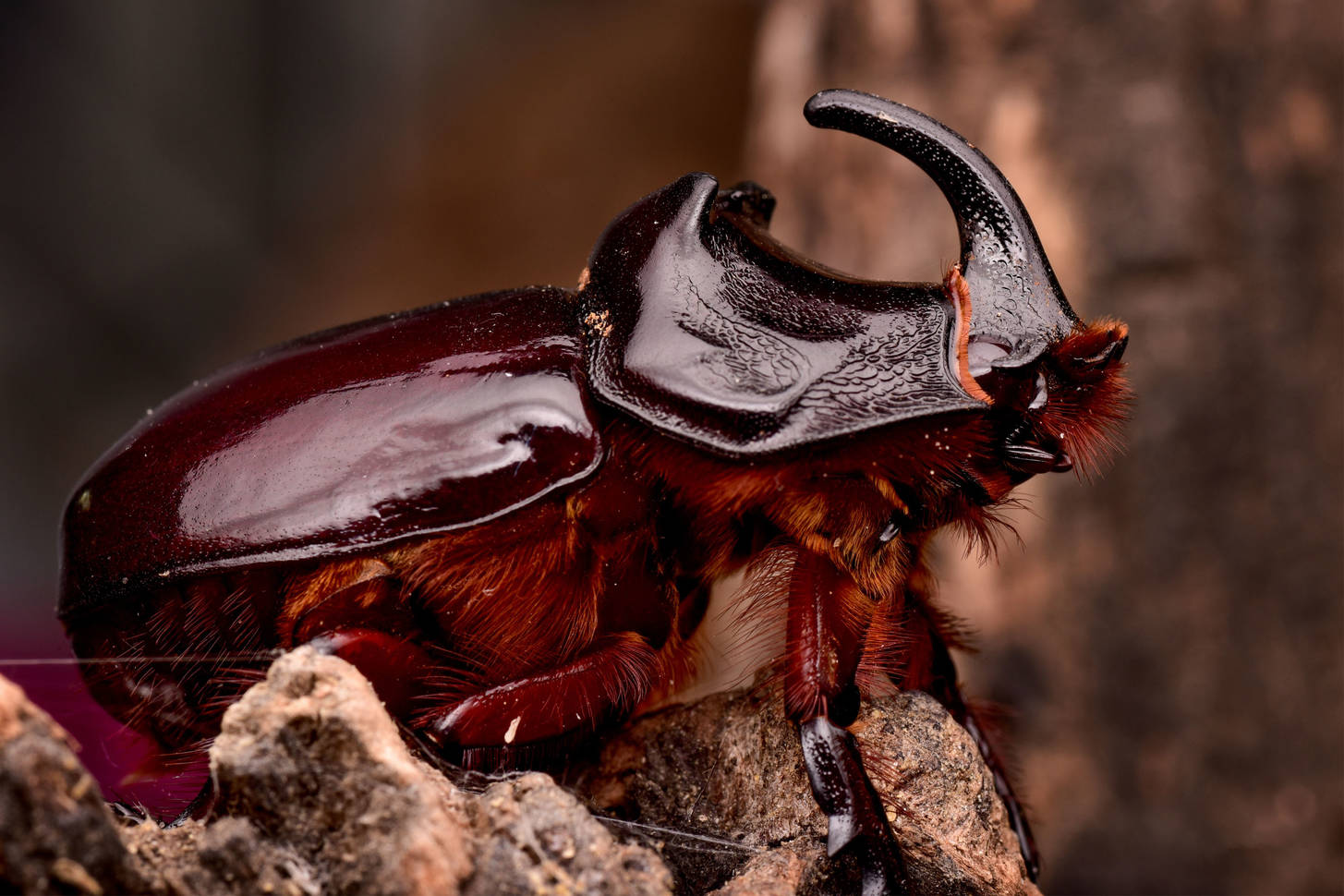The Japanese Rhinoceros Beetle or Kabuto beetle is a popular creature within Asian culture because of its ability and will to fight. It’s one of the larger beetles on earth, and its strength has fueled the curiosity of humans for many years. Here are five interesting facts about the Japanese Rhinoceros Beetle.
The rhinoceros beetle only lives for up to 16 months
There are different stages of its life cycle, and it starts life as an egg. Once the egg hatches, most of its life is spent underground as a larva. It will take around 12 months for the larva to develop and mature into a beetle. Once it is fully developed, it only has around four months of its life left as a fully grown Rhinoceros beetle. Within this time frame, it must find a mate and produce its own offspring for the cycle to continue.

The beetle is most commonly found in Japan, Taiwan, Korea & Eastern China
Rhinoceros beetles are part of a subfamily of beetles called Dynastinae, and they are closely related to the scarab beetle. They are often brown or black in color and have an herbivore diet consisting of sugary foods, such as tree sap and fruits.
They are most commonly found in Japan, Taiwan, Korea, and Eastern China, although variations of the beetle have been found across all the continents, apart from Antarctica. Kabuto beetles are primarily found in tropical and subtropical mountainous areas in the wild.

The rhinoceros beetle has many names across the world
In Japan, it is referred to with three different names: the Japanese rhinoceros beetle, Japanese horned beetle, and kabutomushi. The most common name of the three used in Japan is the kabutomushi. In English, “kabuto” means “helmet,” and “mushi” translates to “insect.” The direct translation of kabutomushi is “helmet insect,” which in Japanese culture refers to it looking similar to a samurai’s helmet.

Japanese Rhinoceros beetles can be fierce and love to fight
The beetle doesn’t tend to fight with humans, though, and they aren’t venomous; they don’t bite or sting us, thankfully. However, they do battle with other kabuto beetles, particularly over a mate.
During these brutal beetle battles, they fight with their horns, and sometimes even snap their opponent’s horns off! The Rhinoceros beetle will use both of its horns to lift or flip its opponent, and can lift 850 times its own weight.

Their incredible strength has fueled our curiosity for many years, which has led to the Rhinoceros beetles being bred and used purely for entertainment. Across Asia, a common gambling activity will be to place two male Rhinoceros beetles on a log and bet on which one will push the other off first.
The first to fall is the loser, and this is often the cause of major loss or gain of money across Asia, especially across the Ryukyu Islands.

Rhinoceros beetles are very popular in Japanese culture
Rhinoceros beetles have become a popular icon within Japanese culture, from being used in advertisements, featuring as characters within anime and cartoons on television.
As a result, it has become popular for children living in areas close to the Rhinoceros beetles’ natural habitat to play with them. They are sold as pets in stores across Japan and other parts of Asia. It’s common for most children to have one, much like in the US, you might have a pet hamster or guinea pig.





Related Posts
7 Interesting Facts About Running
7 Health Benefits of Laughing
7 Hot Facts About Wasabi